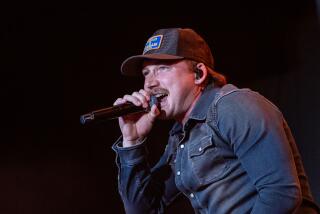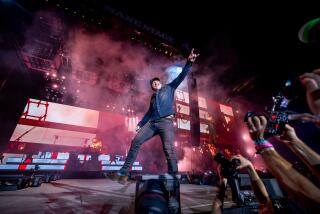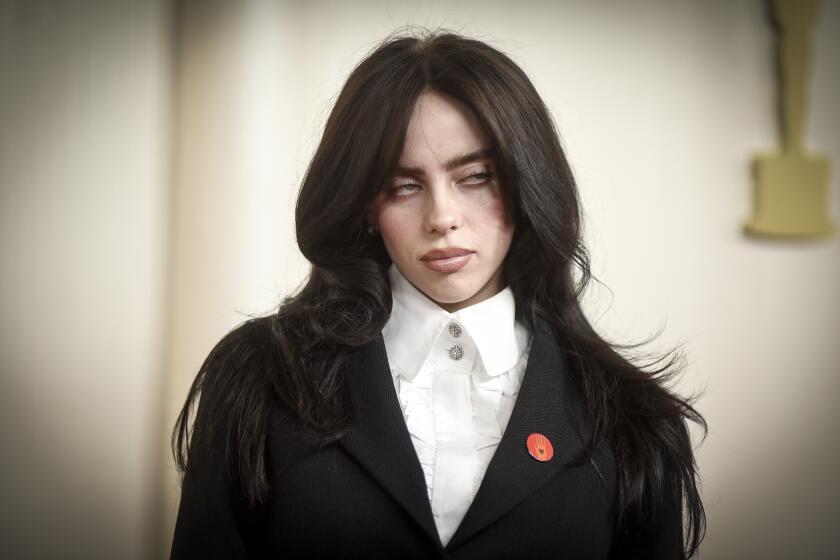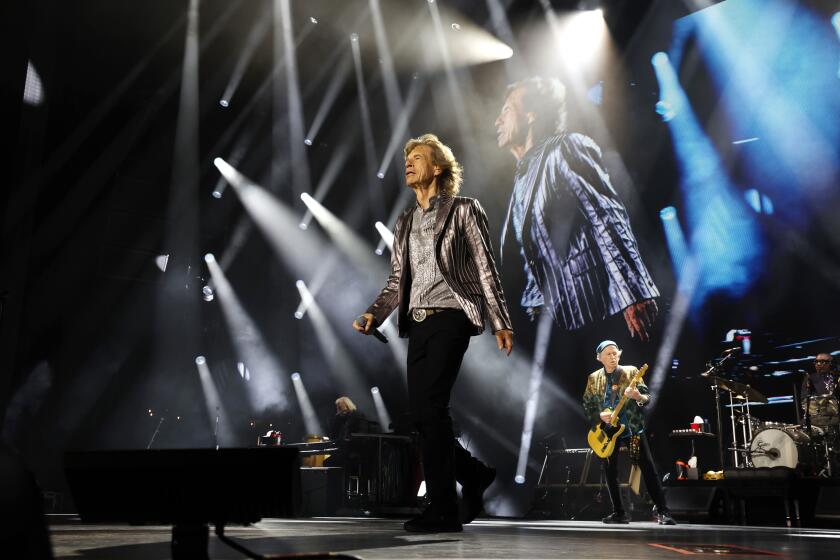The New Toasts of Reggae
Reggae is coming on strong again.
That may be news to many pop fans in the United States, where the Jamaican-born music has been largely relegated by the record industry to the limbo of cult audiences and specialty radio since the music’s greatest figure, Bob Marley, died of cancer in 1981.
It’s unlikely that anyone else in reggae will ever enjoy his level of popularity and acclaim. Marley was a once-in-a-lifetime artist and reggae was a new, developing style almost totally unknown outside Jamaica when he brought it to the world. “Legend,” a 1984 greatest-hits album, has sales of more than 9 million in the United States alone, and Marley has become an international icon.
Today, reggae--like rock and R&B--has; generated many different styles and seen its audience split along generational lines. It has also weathered periods of creative drought.
But there’s also revitalization taking place, thanks to a new crop of Jamaican artists who blend tradition with innovation.
Among the leaders is Bounty Killer, the charismatic deejay whose Jeep-beat urban hybrid sound represents the latest step in a growing merger between hip-hop and reggae. His “My Xperience” album includes collaborations with both reggae singers Junior Reid and Barrington Levy and hip-hop stars the Fugees, Jeru the Damaja and Chef Raekwon of the Wu-Tang Clan.
“My Xperience” stayed on Billboard’s R&B; album chart for six months without the benefit of a U.S. hit single. The hip-hop connection prompted his record company, VP, a strong force in the East Coast and West Indian reggae market, to join forces with New York alternative and hip-hop specialist TVT in promoting Bounty Killer beyond the reggae world.
“Bounty is the hottest deejay out there and he had done some collaborations with hip-hop people, so it seemed like the right time,” said Brian Chin, vice president of marketing for VP. “The hip-hop beats have a much broader appeal and it’s always great to get sales beyond your core market. But we’re still totally focused into reggae. Unlike what many people think, reggae isn’t a single type of music.”
That doesn’t mean first-generation reggae fans will embrace Bounty Killer. His rapid-firedelivery, thick patois and harsh, menacing arrangements may not even sound like reggae to them. It’s a long way from the classic song structures and soul-influenced vocals of Marley and his ‘70s roots-reggae contemporaries.
The hip-hop connection may be news to many, but the two styles have been closely linked for decades. It was actually Jamaican “toasters” such as U Roy who pioneered the concept of rapping over rhythm tracks in the late ‘60s. Kool Herc, a Jamaican deejay living in the Bronx, is widely credited with sparking early rap crews in the late ‘70s by improvising lyrics over funk rhythms.
There was always an exchange of influences, but the partnership took off 10 years ago, when dancehall deejays began dominating the Jamaican scene by rapping over spare arrangements driven by drum machine and keyboard rhythms that were close to the stripped-down hip-hop sound.
By the early ‘90s, many hip-hop artists were including a dancehall track on their albums, and such Jamaicans as Shabba Ranks, Mad Cobra and Chaka Demus & Pliers even enjoyed some U.S. pop chart success. Ini Kamoze’s 1994 No. 1 hit “The Hotstepper” further cemented the bond with hip-hop.
But the urban reggae sound isn’t the only new development in reggae. The most striking one is that many younger Jamaican artists are now embracing the social and spiritual messages that were central to classic roots reggae.
The dancehall deejays’ emphasis on “slackness”--lyrics that focused on sex, guns and macho boasting--had dismayed most first-generation fans and played a big part in reggae’s generational split. But Buju Banton, the most popular deejay in ‘90s Jamaica before Bounty Killer, surprised many by successfully switching to a “conscious” stance embracing the Rastafarian religion on his 1995 album, “ ‘Til Shiloh.”
A number of first-rate Jamaican singers have adopted or adapted to the electronic dancehall sound--also sometimes known as raggamuffin or ragga. Junior Reid and the much-touted Luciano--whose album “Messenger” just came out on Island Records--combine their positive lyrical messages with contemporary studio techniques and arrangements. Veterans Beres Hammond and Barrington Levy kept their popularity with older fans through their own records while connecting with the younger Jamaican audience by cutting duets with dancehall deejays.
But the reggae story isn’t limited to new Jamaican artists or developments in the notoriously reggae-resistant U.S. market. Jamaican music has never stopped exerting a strong influence on pop recording artists from Europe, Africa and Latin America.
And reggae styles are a key element in the growing dance underground. Most underground dance styles--from ambient and trip-hop to jungle and drum-and-bass--have been heavily influenced by experiments that originated in Jamaican studios.
But reggae’s importance won’t necessarily translate into wider recognition for the style or popularity for individual artists. Bounty Killer is on the tip of the urban reggae wave now, but his uncompromising street sound and heavy accent aren’t likely to find favor from radio, which prefers more pop-oriented reggae, such as that offered by Maxi Priest, UB40 and Big Mountain.
But that doesn’t mean that reggae’s influence in the larger pop scene will diminish--if anything, it should increase as the different Jamaican sounds continue to connect with a wide range of the pop audience. Many of the most intriguing new pop developments synthesize different styles, so reggae’s blend of positive messages, undeniable rhythms and studio innovations is sure to play a prominent part in the future mix.
More to Read
The biggest entertainment stories
Get our big stories about Hollywood, film, television, music, arts, culture and more right in your inbox as soon as they publish.
You may occasionally receive promotional content from the Los Angeles Times.






